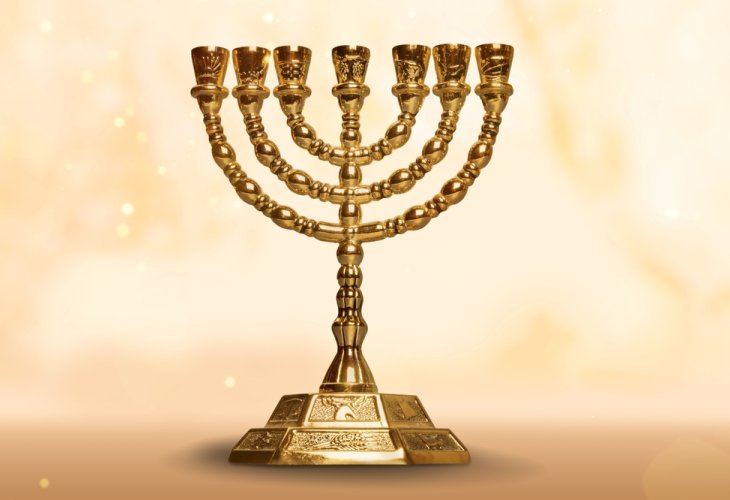Issues in the Bible
The Shape of the Temple Menorah: The Ancient Mystery Behind Judaism’s Most Iconic Symbol
Scholars still debate the Menorah’s true form — an enigma awaiting the light of redemption to be revealed
 (Photo: shutterstock)
(Photo: shutterstock)In Parshat Beha’alotcha, Aaron is commanded to light the Menorah in the Tabernacle every morning and evening. We are all familiar with the Menorah’s general shape — but was it in fact round, as commonly depicted?
Straight or Curved Branches?
Rashi, commenting on the verse, writes that the Menorah’s “branches extended diagonally from both sides.” Likewise, Maimonides (the Rambam), in his own hand-drawn sketch, depicted the Menorah with straight diagonal branches, resembling the shape of a palm tree, not the rounded form most people recognize today.
However, in many ancient depictions, the Menorah appears curved:
On the Arch of Titus in Rome, which portrays the spoils taken from the Second Temple.
On coins minted by Mattathias Antigonus, the last Hasmonean king.
In Jewish tombs and ancient synagogue mosaics — in Jerusalem’s Jewish Quarter, in the Jericho synagogue, in Katzrin, and in the Beit She’arim burial caves.
Which version is authentic — the straight or the curved?
The Chabad and Halachic View
According to the Lubavitcher Rebbe, the branches were unquestionably straight, not curved. He emphasized this view strongly, citing Rashi and the Rambam’s drawing, and Chabad communities today follow this tradition by creating Chanukah menorahs with straight branches, in memory of the Temple Menorah.
Rabbi Chaim Kanievsky, in his commentary on the Rambam, also supported this interpretation, explaining that the diagonal alignment indicates straight lines extending upward and outward from the central shaft.
The Alternative Interpretation
Others, however, argue that the term “diagonal” does not necessarily mean a straight line. It could describe a curved, angled extension, and therefore the Rambam’s words might still allow for a rounded form.
Furthermore, many scholars point out that it seems unlikely that so many independent Jewish depictions — from coins, mosaics, and engravings across centuries, were all mistaken. They suggest that the curved Menorah seen in these artifacts may well reflect the real appearance of the Temple Menorah.
The Arch of Titus Debate
The Lubavitcher Rebbe rejected the accuracy of the Arch of Titus relief, asserting that the Romans may have intentionally altered the design, or that the sculpture represents another menorah from the Temple courtyards — not the sacred golden Menorah that stood inside the Sanctuary itself.
He also noted that the Talmud already warned against relying on visual artifacts for halachic conclusions. The Sages told of Rabbi Elazar ben Rabbi Yossi, who saw the priestly headplate (tzitz) in Rome’s Temple of Peace and tried to infer halachic details from it — but the other rabbis dismissed his conclusions, insisting that Jewish law is determined by the Mishnah and Talmud, not by archaeological evidence.
Awaiting the True Menorah
Most scholars today lean toward the curved design, based on the abundance of archaeological findings. Still, the debate remains unresolved.
Ultimately, we may simply have to wait for the coming of the Mashiach and the restoration of the Temple vessels to finally know what the true Menorah really looked like.

